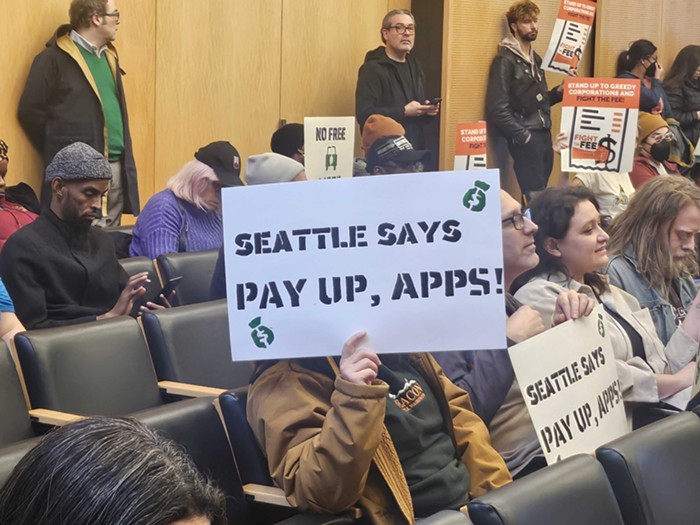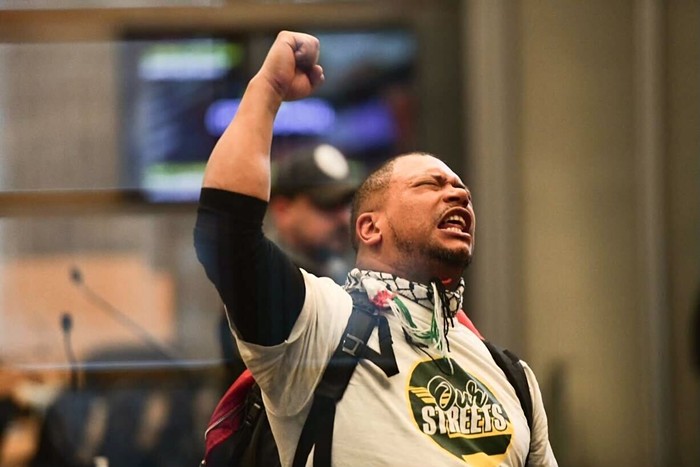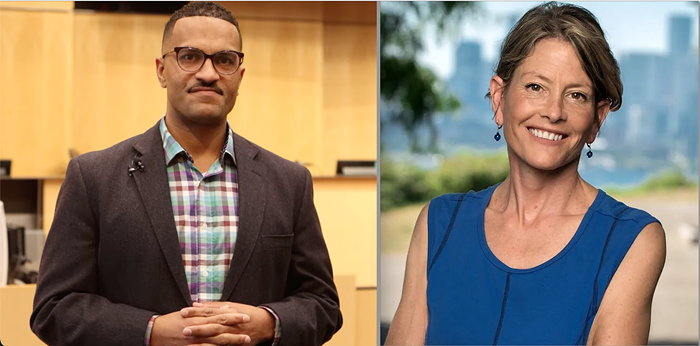
The eight-member jury for King County's inquest into the police killing of Che Taylor has returned its answers to 55 questions. Those answers make clear that jurors have little doubt that Taylor had a handgun near him when two Seattle police officers killed him in February of 2016, but there was some disagreement among jurors over questions relating to how clear a threat Taylor posed to the two officers.
A significant majority of jurors said the police officers, Michael Spaulding and Scott Miller, feared for their lives in the moment they shot and killed Taylor.
As the same time, the jury was unanimous in affirming that Taylor was showing his hands and getting to the ground when he was shot by Spaulding and Miller. The Seattle Police Department has maintained that Taylor was not following commands when the two officers opened fire.
The Taylor family is expected to make a statement shortly, as is Ted Buck, an attorney for Spaulding. We'll update this post with further developments and analysis.
UPDATE, 4 pm:
Attorneys representing both sides in the Che Taylor inquest found responses within the jury’s lengthy 55-question form that, the lawyers said, vindicated the actions of their clients.
Attorneys for the Taylor family said the jury’s unanimous decision that Taylor did show his hands and move downward after officers commanded him to do so show that Taylor was following commands when he was fatally shot by the two officers.
Ted Buck, an attorney for Officer Spaulding, pointed to the jury’s majority affirmation that the two officers believed they were under threat of bodily harm as proof that the officers acted accordingly. The jury was not, however, asked to decide if Taylor was objectively a threat to the officers. The question only asked whether the officers believed Taylor was a threat.
All of the inquest jurors were white. Seven of them said Spaulding, the officer closest to Taylor during the event, believed Taylor was a threat to his life; one juror said it was unknown. Six of the jurors said Miller, the officer behind Spaulding during the incident, believed Taylor “posed a threat of death or serious bodily harm.” One juror said Miller did not believe this and one juror said it was unknown.
Meghan Pelley, one of the eight jury members, told The Stranger following the inquest that the jury understood that question to be specifically asking about what the officers thought—not about whether or not Taylor was objectively a threat.
“We believed that that’s what they believed," Pelley said. "We don’t know what actually happened, though."
Jenna Mitchell, another inquest juror, told The Stranger that the incident should be investigated further.
“I think from my perspective there needs to be additional investigation,” Mitchell said. “For me the evidence didn’t support what the officers were claiming, that he was pulling a gun to turn around and shoot him.”
Mitchell, who is white, was wearing a sweatshirt that had the phrase “Black Lives Matter” on it during the jury selection phase of the inquest and said she thought of the movement during the inquest.
“I really tried to be impartial and made sure I was listening to all of the testimony and taking everything with a grain of salt,” Mitchell said. “I certainly know that in this country right now so many black people are being killed by police officers, so it was certainly in the back of my mind.”
There was some disagreement amongst the jurors as to what the two officers saw Taylor do immediately before they opened fire. Six jurors said Miller thought Taylor was drawing a handgun from a holster on his right hip (one juror said Taylor did not think that and one juror said it was unknown). All eight jury members said Spaulding thought Taylor was drawing a handgun.
Attorneys for the Taylor family argued that the two officers were shouting over each other and gave confusing commands as they approached Taylor. Part of the jury seemed to agree that the officers’ approach was muddled. Six of the jurors said it was unknown if Miller identified himself as police when he approached Taylor, two said Miller did identify himself. Five of the jurors said Spaulding did not identify himself, three jurors said it was unknown if Spaulding identified himself.
The jury split evenly on whether or not the two officers were giving their commands at the same time; four said they were, four said they were not.
Both officers have been placed back in regular police duty following an internal investigation that in May 2016 cleared them of any wrongdoing.
Andre Taylor, Che Taylor’s brother, said he did not see the all-white jury as a problem.
“There was a question posed to them about Black Lives Matter, they were aware of that,” Taylor said. “I don’t want to project this idea that because someone is white they can’t be fair.”
Inquest hearings do not carry any civil or criminal penalties, they are only concerned with establishing the facts surrounding the case. The jury’s answers will factor into the King County Prosecutor’s office decision on whether or not to pursue criminal charges against the two officers. The inquest’s testimony can also be used in any civil suits the Taylor family may file against the city or county.
James Bible, an attorney for the family, said the family is still looking for criminal charges to be filed against the two officers and is not currently planning a civil lawsuit.
“There aren’t currently plans at this stage," Bible said. "The issue for the family… is we want them to be in a place where they can heal and we want to pursue a potential prosecution in this matter."
Buck, Spaulding’s attorney, said the jury’s findings would make it harder to win a civil lawsuit.
“I think the answers the jury gave today are probably going to at least throw a damp towel on the thoughts of a civil lawsuit,” Buck said.
The Stranger covered every day of the inquest, so if you want to read more details about this case check out our earlier coverage: Jury selection and background on the case from day one; the emotional second day of the inquest, when video of Taylor being shot brought yelling and tears to the courtroom; the third day, when medical first responders described a lifeless Taylor; the testimony of Officer Spaulding, which represented the first time he'd spoken publicly about killing Taylor; the testimony of Officer Miller, the only person to see Taylor’s gun before he was killed; and the final day of testimony, including discussion of two witnesses who did not testify because they could not be found.



















